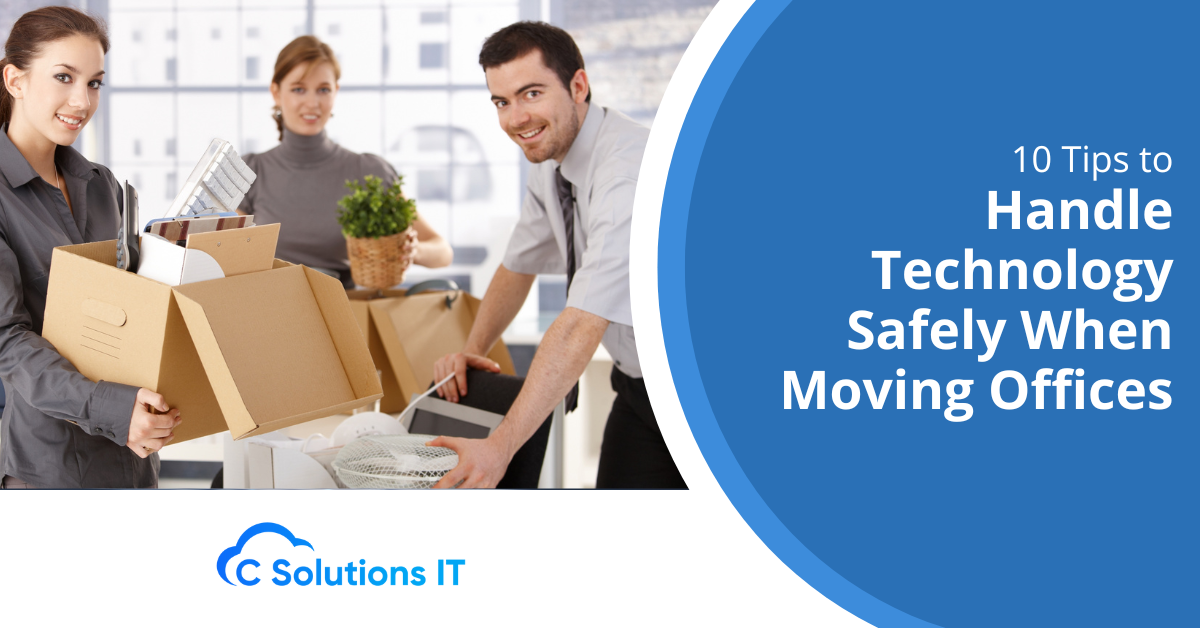10 Tips to Handle Technology Safely When Moving Offices

The thought of moving to a new office can be intimidating, but it’s also an exciting opportunity for growth and expansion. One of the biggest challenges when moving offices is ensuring that all technology is handled safely and securely.
With the increasing importance of technology in the workplace, it is crucial to have a plan in place for moving your IT infrastructure. In this article, we will provide you with some tips to help you handle technology safely when moving offices.
1. Create a Plan
The first and most important step when it comes to moving your technology safely is to create a plan. This plan should include a detailed inventory of all the hardware and software that will need to be moved.
It is also important to create a timeline for the move that includes specific dates and deadlines for each step of the process. By having a plan in place, you will be able to ensure that everything is moved safely and efficiently.
2. Hire Professionals
When it comes to moving your technology, it is always best to hire professionals who are experienced in handling IT equipment. They will be able to properly pack and transport your equipment to your new office without causing any damage.
They will also be able to help you set up your new office, including installing new equipment and connecting to your network. Consider hiring a professional moving company and consulting with IT experts for a seamless moving process.
3. Backup Your Data
Before moving any equipment, it is important to back up all of your data. This includes backing up all of your files, databases, and other important data. By backing up your data, you can ensure that no data is lost during the move. You can either use an external hard drive or a cloud-based backup service to back up your data.
4. Label Your Equipment
When packing your equipment, it is important to label each item with its contents and destination. This will make it easier to identify each item and ensure that it is placed in the correct location. Labeling your equipment will also help you keep track of everything during the move.
5. Protect Your Equipment
When packing your equipment, it is important to protect it from damage during transit. This can be done by using specialized packing materials such as anti-static bags, bubble wrap, and foam padding. Make sure that all equipment is securely packed and cannot move around during transit.
6. Disconnect Equipment Properly
Before moving any equipment, it is important to properly disconnect it. This means shutting down all equipment and unplugging it from the power source. You should also disconnect any cables or cords and label them so that they can be easily identified during the setup process.
7. Keep Software Licenses and Serial Numbers Safe
When moving your software and hardware, it is important to keep all licenses and serial numbers safe. This includes keeping track of all CDs, DVDs, and other installation media. You should also keep track of all software licenses and serial numbers to ensure that you can reinstall your software on your new equipment.
8. Test Your Equipment
Once all equipment has been moved to your new office, it is important to test everything to ensure that it is working properly. This includes testing all hardware, software, and network connections. By testing everything, you can ensure that everything is set up correctly and that there are no issues that need to be addressed.
9. Train Your Employees
When moving to a new office, it is important to train your employees on how to use the new equipment and software. This will ensure that they are able to work efficiently and effectively in the new environment. You should also provide your employees with a list of contacts for technical support in case they have any issues with the equipment or software.
10. Update Your Security
Finally, when moving to a new office, it is important to update your security measures to protect your technology from potential threats. This includes updating your antivirus and firewall software, securing your wireless network, and implementing password policies.
You should also consider implementing data encryption to protect sensitive data. It’s important to assess the physical security of your new office when you arrive as well.
Make sure that your equipment is stored in a secure location and that only authorized personnel have access to it. You should also consider installing security cameras and an alarm system to deter potential burglars.
Start Your Move Today
Moving to a new office can be a stressful experience, especially when it comes to handling your technology. By following these tips, you can ensure that your technology is moved safely and securely to your new office.
Creating a plan, hiring professionals, backing up your data, labeling and protecting your equipment, disconnecting equipment properly, keeping software licenses and serial numbers safe, testing your equipment, training your employees, and updating your security are all crucial steps in ensuring a successful move.
If you need assistance with your office move or want to ensure that your technology is handled safely, contact C Solutions today. Our team of professionals can provide you with the expertise and support you need to ensure a smooth transition to your new office.
